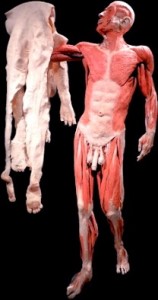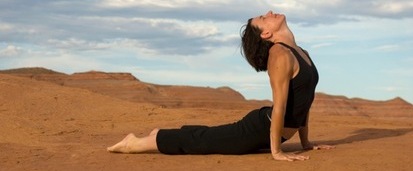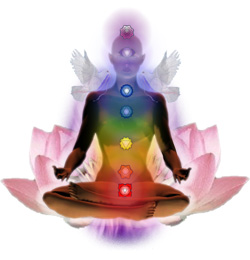 In the celebration of life and movement, let’s go over some of the most beautiful yoga poses that incorporate balance. We will discuss what makes balance so important for health and vitality, and how your balance can and will improve as long as you periodically test your balance and let your body do what it does without having to think about it in your frontal lobe.
In the celebration of life and movement, let’s go over some of the most beautiful yoga poses that incorporate balance. We will discuss what makes balance so important for health and vitality, and how your balance can and will improve as long as you periodically test your balance and let your body do what it does without having to think about it in your frontal lobe.
Balance training ensures neuromuscular efficiency of what is termed the kinetic chain, or the combination and interrelation of the nervous, muscular, and skeletal systems. In balance training at entry level, very little joint motion is involved, and the goal is to improve reflexive joint stabilization contractions, thereby increasing joint stability. This is achieved by placing the body in unstable environments where it must react by contracting the right muscles at the right time to maintain balance. All entry level balance movements are done standing on one leg, and aside from the rudimentary single-leg balance itself all movements incorporate motion in all three planes: frontal, sagittal, and transverse.
What this all means is that if you are looking to strengthen your core and are currently working with core stabilization movements that do not require balance, such as the previously described Cobra pose and Two-Legged Table, balance stabilization in conjunction with core stabilization will get you to poses that incorporate both, in combination with breathing to create momentary synergy of these three aspects.
There is much to cover in describing how to properly stay in Natarajasana, or King of the Dancers Pose. It is similar to the poses One-Legged Royal Pigeon and Bow, both of which do not incorporate the balancing aspect but do bind the hands and feet in a backbend. After this is detailed, we will close with beginners Balance Stabilization movements that will build up the neuromuscular efficiency of the entire kinetic chain to make the balance aspects of Natarajasana feel like second nature.
The King of the Dancers pose is an advanced backbending standing balance posture. You’ll notice immediately that the back is arched upward very much like Cobra pose, and in this pose as well you must find the deeper, more intrinsic back muscles to perform the action of spinal extension. This is because although the movement and mobility is obvious, breathing once you are in the pose is most important, and using the larger superficial muscles like the latissimus will interfere with your breath. Using the deeper spinal muscles also frees up the mobility needed to find the full range of the scapulae. Motion of the spine should be concentrated in the thoracic while the lumbar is stabilized by the eccentric motion of the psoas minor, rectus abdominis, and obliques. The intrinsic extensor muscles of the spine reponsible for creating and maintaining spinal extension are the intertransversarii, interspinalis, rotatores, multifidi, spinalis, semisponalis, splenius capitis and crevicis, longissimus, and iliocostalis.
The arms are lifted overhead, and with the proper scapular motion assisted by the serratus anterior, the humerus or upper arm bone will be just behind the ears with the scapula lifted and coming together to hug the ribcage at the rear. The shoulder joint will be supported by the supraspinatus and subscapularis, so scapula mobility properly gets the arms in position while making sure the glenohumeral joint is not overmobilized and there is enough mobility in the thoracic spine.
In the standing leg, the muscles of the feet and forelegs are active for balance. The hamstrings are lengthened and can work eccentrically to resist tipping forward too far, while the quadriceps extend the knee. The gluteus medius and minimus and the tensor fascia latae work eccentrically keeping the pelvis level.
In the lifted leg, the hamstrings create hip extension and knee flexion, and the vastus lateralis and medialis come into isometric or concentric action to extend the knee, resisting the hand on the foot and increasing hip extension as the pose deepens. The gluteus maximus extends the hip along with the adductor magnus. The legs should be kept adducted and internally rotated to avoid overworking the lumbar spine or overmobilizing the sacroiliac joint.
This pose minimizes the excursion of the diaphragm so it should rarely be held for long durations. With the shallower breathing afforded by the pose, the muscular effort required to maintain the stabilization of anterior and posterior musculature working against each other combined with deep spinal extension soon cannot be met with the demand of sufficient oxygen supply. With the need to breathe deeper, stabilization from the abdominals and diaphragm is lessened, which could lead to a higher risk to the spine and shoulders. For this reason, monitor the breath and the body’s natural requirement for more oxygen as a signal to come out of the pose. Before that moment comes, however, keep in mind what you will be lengthening: the triceps, the latissimus dorsi, the pectoralis major, and the rhomboids in the arms and related muscles. Related to the spine, the rectus abdominis, obliques, and the intercostals (open your chest). The hamstrings and abductors in the standing leg, and in the lifted leg the iliacus, psoas major, and rectus femoris.
To systematically and progressively train your balance, begin with an easy exercise and move on to harder ones. The following exercises are safe and progressive. You can change the parameters on your own to make them progressive in all areas by moving from simple to complex, known to unknown, stable to unstable, static to dynamic, slow to fast, using two arms/legs to single arm/leg, and having eyes open to eyes closed. These exercises can be performed to higher proprioceptive challenges on the floor, a balance beam, a half foam roll, an airex pad, or a dyna disc. By progressing and changing variables like speed of motion, range of motion, duration, frequency, types of resistance (body weight versus dumbbells, tubing, or cable), and body position (Two-leg/single-leg–stable/unstable), you can design a program for your balance training that will keep your kinetic chain reactive to keep you on your feet in any situation.
To prepare for all of the following, stand with feet shoulder-width apart and pointed straight ahead, hips neutral. Lift the chest, retract the shoulders slightly, and tuck the chin. Draw the navel in and activate the gluteals.
1. Single-Leg Balance
Lift one leg directly beside the other with hands on hips, keeping hips and shoulders level. Hold for 5 to 20 seconds. Slowly return to original position and switch legs and repeat.
2. Single-Leg Reach
Lift one leg beside the balance leg, and move lifted leg to the front of the body, hold for 2 seconds. Return to original position and repeat. The leg can be moved to the side of the body and also reaching behind the body as a progression.
3. Single-Leg Hip Internal and External Rotation
Lift one leg beside the other, keeping level hips and shoulders, but this time lift the leg as if you were stepping up to a low stool, so your femur is now parallel with the ground. Rotate the hip of the lifted leg by tracing the arc of a circle with the bent knee to the side of the lifted leg. This is internally and externally rotating the hip of the lifted leg, and hold for 2 seconds. Switch legs and repeat by turning the other knee and hips outward to the other direction and holding for 2 seconds. The spine and hip should move as one so as not to rotate the spine.
4. Single-Leg Lift and Chop
Lift one leg beside the balance leg while holding a medicine ball in your extended arms. If you lift the right leg, hold the medicine ball beside your left thigh. Lift the medicine ball diagonally over the right shoulder, rotating the body so the ball is over the balance leg. Hold for 2 seconds, slowly return to the original position, repeat, and switch legs.
When performing these balance exercises, keeping the hips level will decrease stress to the lumbo-pelvic-hip complex, or LHC. Make sure to contract the gluteal musculature of the balance leg through all balance exercises to help stabilize the lower extremity. Lastly, make sure the knee of the balance leg always stays in line with the toes. If you struggle with balance, these simple yet challenging exercises will ensure you can handle the intermediate and advanced poses in your yoga practice, as well as every movement you make anywhere you go where your stability suddenly is questioned and needs a reaction.
















It never dawned on me that you could train your balance, but now that your bring it up, but of course. I can see why Yoga is such a good practice and staves off aging. Now if I can just get my Yoga practice from the mind to the mat. Thanks for sharing with us.